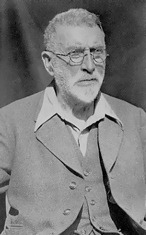
Mr. Charles Oldham, a leading authority on British malacology and ornithologv and a notable field naturalist, died at Berkhamsted on13th. April at the age of 73.
Oldham, the son of a Manchester merchant, was educated at Manchester Grammar School. He was placed in an insurance office at the age of 16, but business was not his choice and he entered it with a distaste which he subsequentlv outgrew. He became an assistant manager first in the Manchester office and then in the London office of the Commercial Union Assurance Company, and retired in 1927.
Throughout his business life his slender stock of private time was spent on his own proper study. The week-ends, the holidays, the light evenings were devoted to long tramps and watches on the hills, moors, and marshes. Aided by the natural gifts of a powerful frame, acute sight and hearing, and an exceptionally retentive memory, he developed powers of observing and locating which placed him in the first rank of field naturalists and it was here that his genius lay. It was hardly communicable through print. His published papers were numerous and valuable; he contributed the field-notes for the 1st edition of Witherby’s Handbook of British Birds, and the account of the Birds of Cheshire which he wrote in collaboration with the late T. A. Coward is a recognized classic.
But his knowledge which, within his sphere, was encylopaedic in its breadth and accuracy, had an intuitive quality, and was best displayed in his rapid and unerring identifications, his private discussions, and work on local societies. He avoided presidencies for the same reason that he avoided dinner-parties, but at one time or another he was vice-president of the Linnean Society, the Ray Society, the British Ornithologists Union the British Ecological Society, and the Malacological Society, and he served on the council of the Conchological Society, the Ornithological Club, and the Freshwater Biological Association. For ten years he was the honorary secretary of the Hertfordshire Natural History Society, of which he ultimately accepted the presidency. Widely read and quickly interested, his circle was as large as he chose, but men had to seek him. Those who found him never let him go. Izaak Walton’s “picture of my own disposition” in its essential quality of a strong and gentle character at one with truth and nature, might stand for Oldham’s.
He married first, in 1895, Fanny Tyas, daughter of S. A. Tyas, of Sale, who died in 1900; and second, in 1930, Dorothy, widow of his brother Roger and daughter of Charles Scorer, of Lincoln, his own native city.
Note by A. E. Salisbury
It will be of interest to add to the above a record that this Society owes more than most members perhaps realize to Oldham, apart from his many papers on British molluscs, especially those relating to Pisidium he it was who founded the Research Fund by the generous gift of £100. His collection of Pisidium was given to the British Museum just before his death, and is kept intact for reference as the Oldham collection.
He was untiring in anything he could do to help the Society as a whole as well as its individual members. He persistently refused the presidency, but in 1917 accepted office as treasurer, and for twenty-two years directed the Society’s finances with unqualified skill.
It was a happy conceit of his to complete the quarter of a century as treasurer, but by doctor’s orders he had to resign his office into other hands in the autumn of 1939.
Note by L. E. Adams
Oldham’s means and leisure enabled him to study heredity in various snails on an extensive scale. Applying the Mendelian system he produced a perfect albino line of Planorbis corneus, i.e. a red animal with a white shell. He also produced the rare variety baylei of H. arbustorum by mating a canigonensis with flavescens, which in the first generation yielded ordinary arbustorum ; two of these mated yielded (a) brown and flecked, (b) brown without flecks (canigonensis), (c) yellow and flecked (flavescens), (d) yellow without flecks (baylei).
Quite recently he sent me four pink Geomalacus maculosus which he had bred from a normal specimen, the colour being due, he supposed, to the carrots on which he had fed them.
Besides ornithology he had an intimate knowledge of botany and geology and of British mammals, especially bats. On his seventieth birthday some of his naturalist friends sent him an address of congratulation and appreciation.
